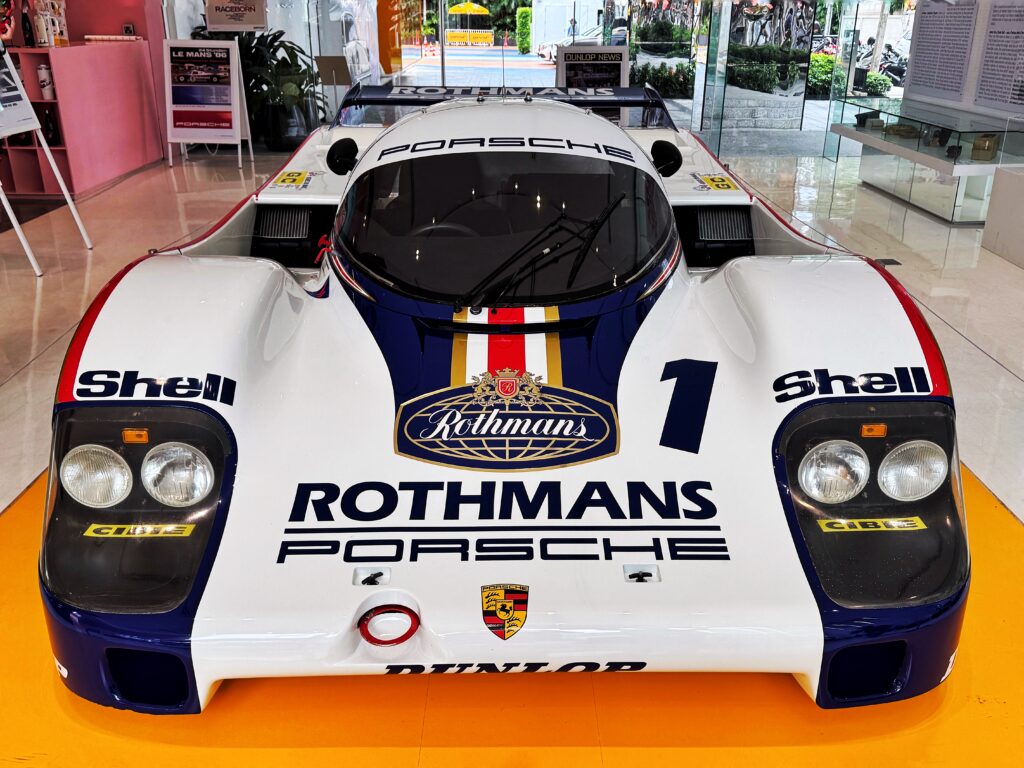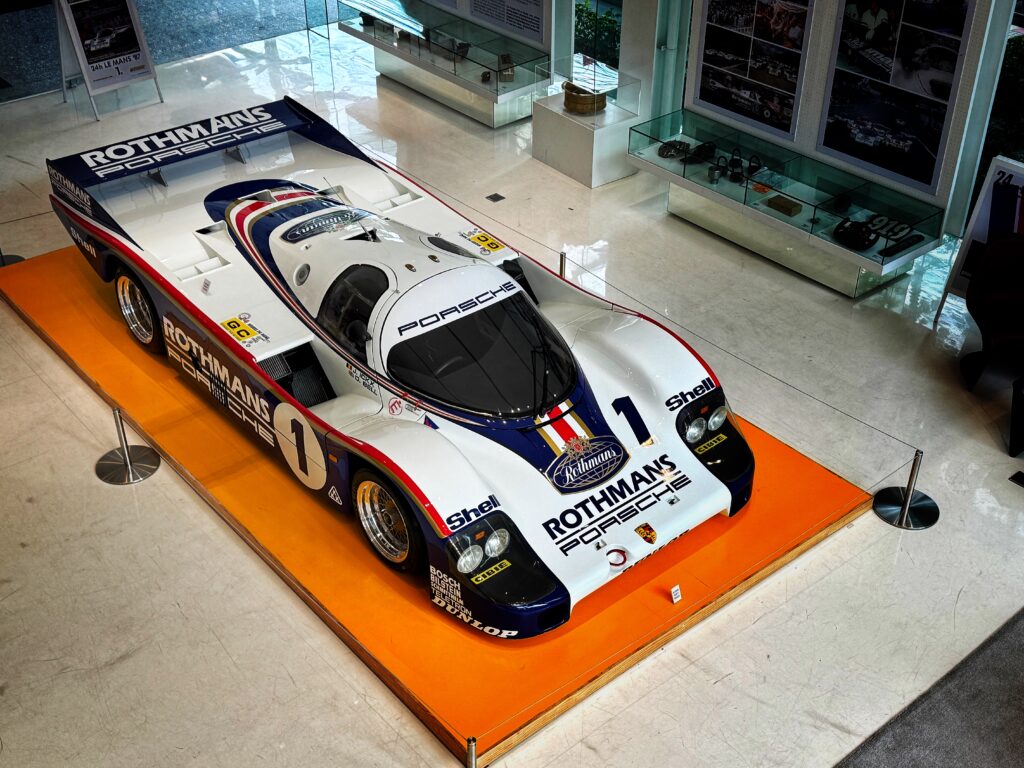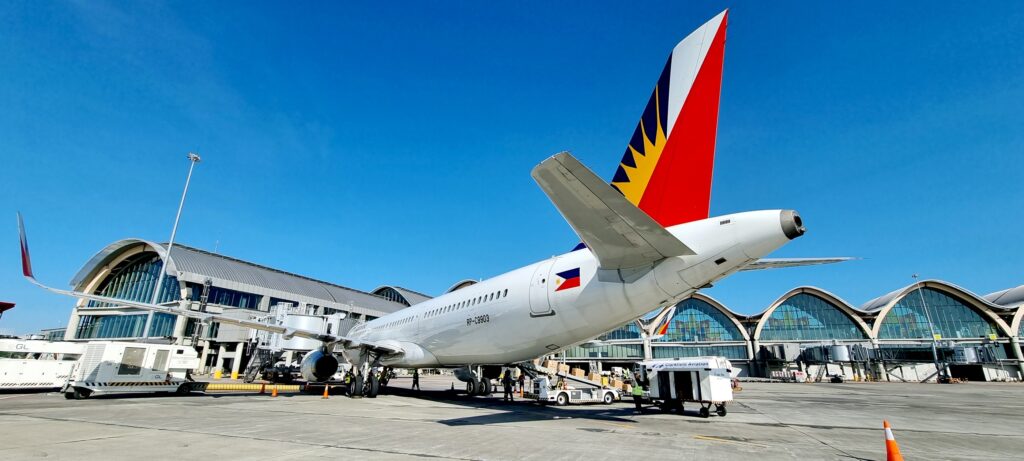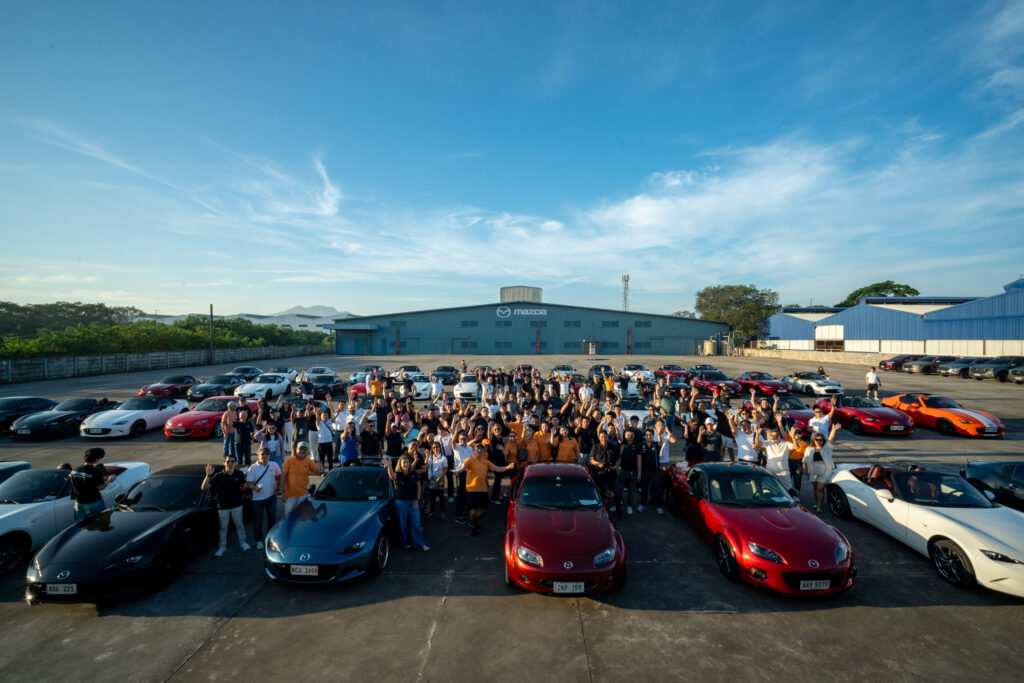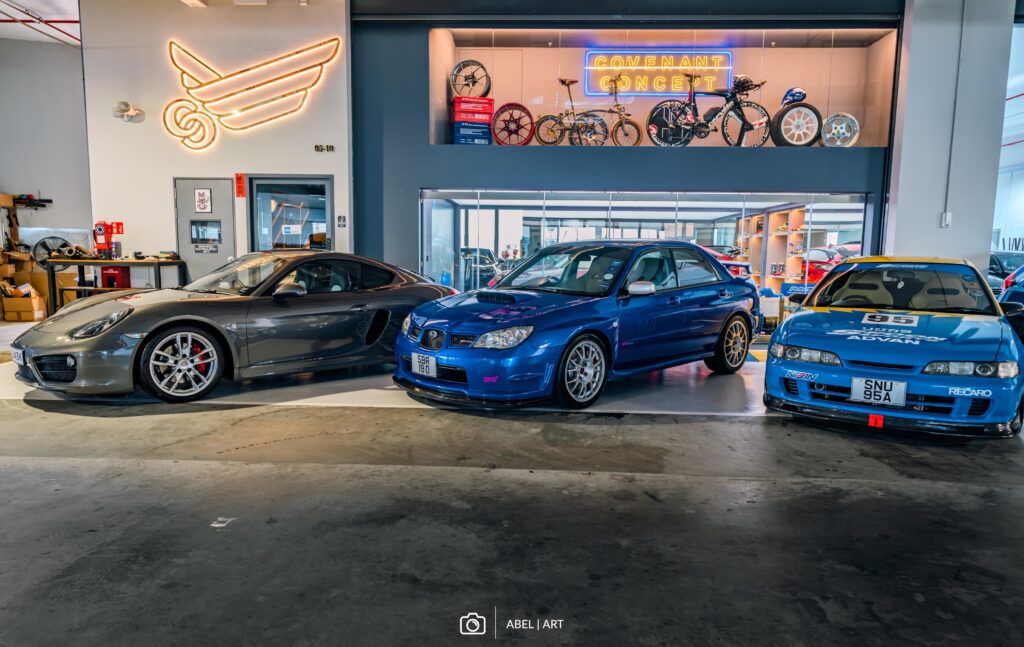It’s easy to miss Curvistan Bangkok. Erica and I took the BTS Skytrain, got off at Thong Lor Station, two stops away from our hotel in Asok, and missed it completely, getting off on the opposite side of Sukhumvit, one of Bangkok’s busiest and most important thoroughfares. Thankfully, after a quick consult on Google Maps, we saw it, hiding behind the BTS Skytrain structure.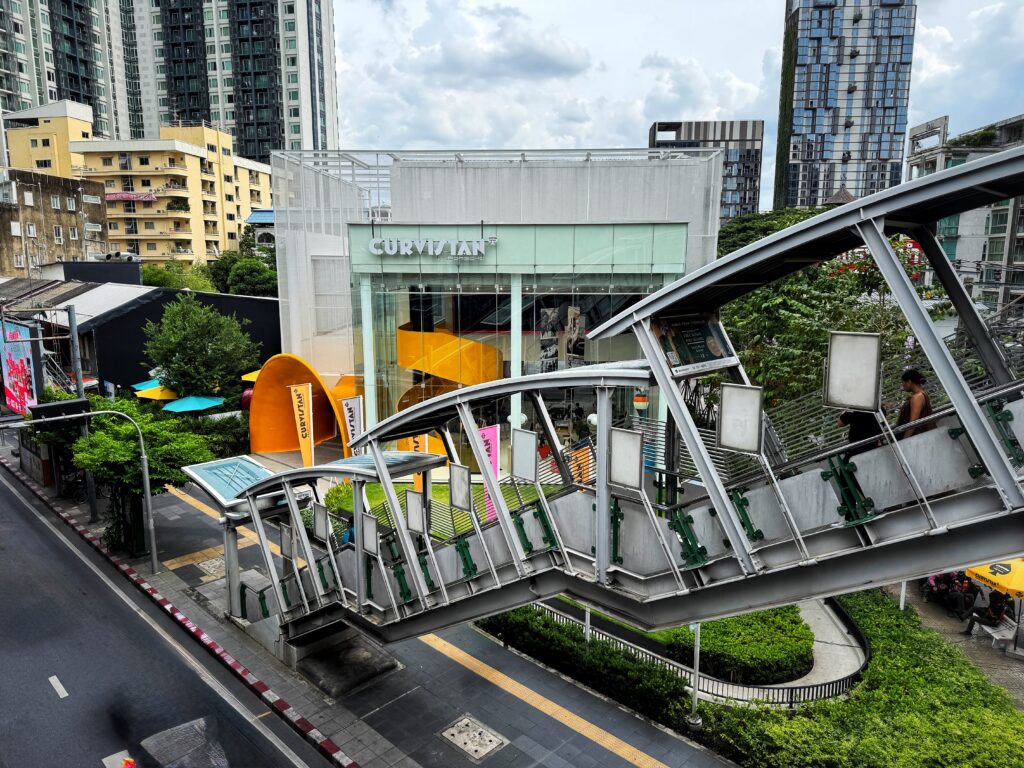 Curvistan Bangkok is a collaboration between Stefan Bogner of Porsche-affiliated media Curves Magazine (which produces amazing stories and photography for people who love cars, motorcycles, and driving or riding plus traveling, usually to places less traveled ) and Thai entrepreneur and enthusiast Chanond Ruangkritya. It’s a Porsche-themed lifestyle center, an art gallery, a clubhouse/social hall of sorts, an events place, a store to buy official Porsche lifestyle products and exclusive Curvistan Bangkok merchandise, and a cafe that serves great pastries and even better drinks.
Curvistan Bangkok is a collaboration between Stefan Bogner of Porsche-affiliated media Curves Magazine (which produces amazing stories and photography for people who love cars, motorcycles, and driving or riding plus traveling, usually to places less traveled ) and Thai entrepreneur and enthusiast Chanond Ruangkritya. It’s a Porsche-themed lifestyle center, an art gallery, a clubhouse/social hall of sorts, an events place, a store to buy official Porsche lifestyle products and exclusive Curvistan Bangkok merchandise, and a cafe that serves great pastries and even better drinks.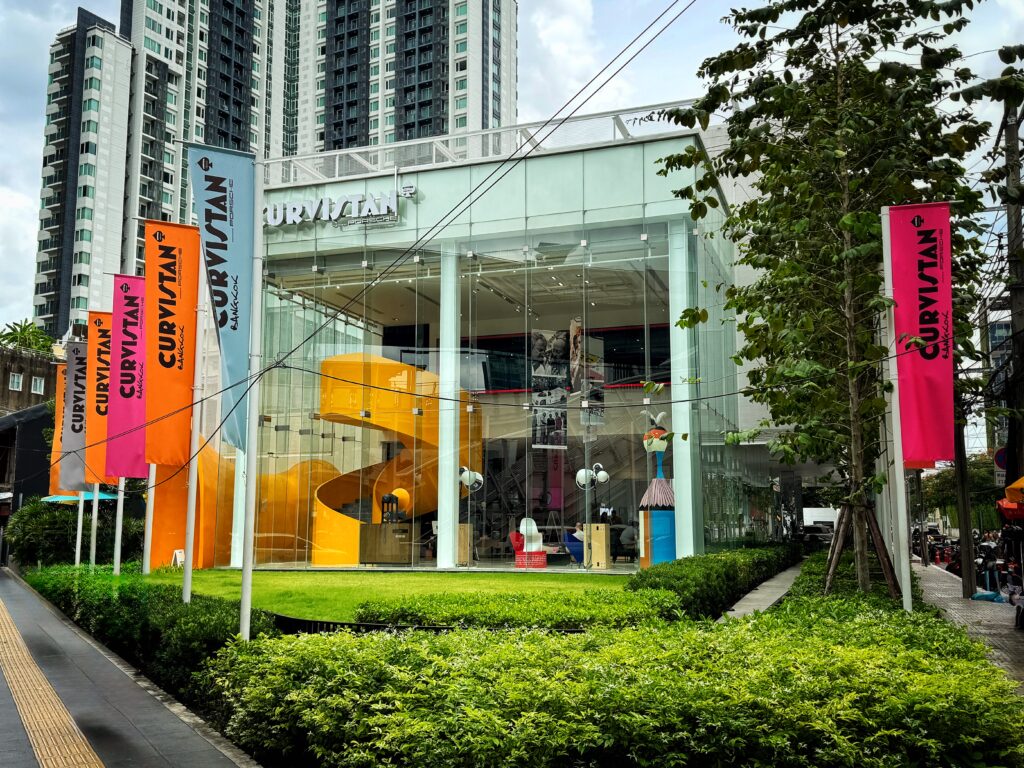 Being the Porsche fanatic that I am, I knew I had to mosey over, dragging along the missus who likes anything with great drinks and amazing pastries.
Being the Porsche fanatic that I am, I knew I had to mosey over, dragging along the missus who likes anything with great drinks and amazing pastries.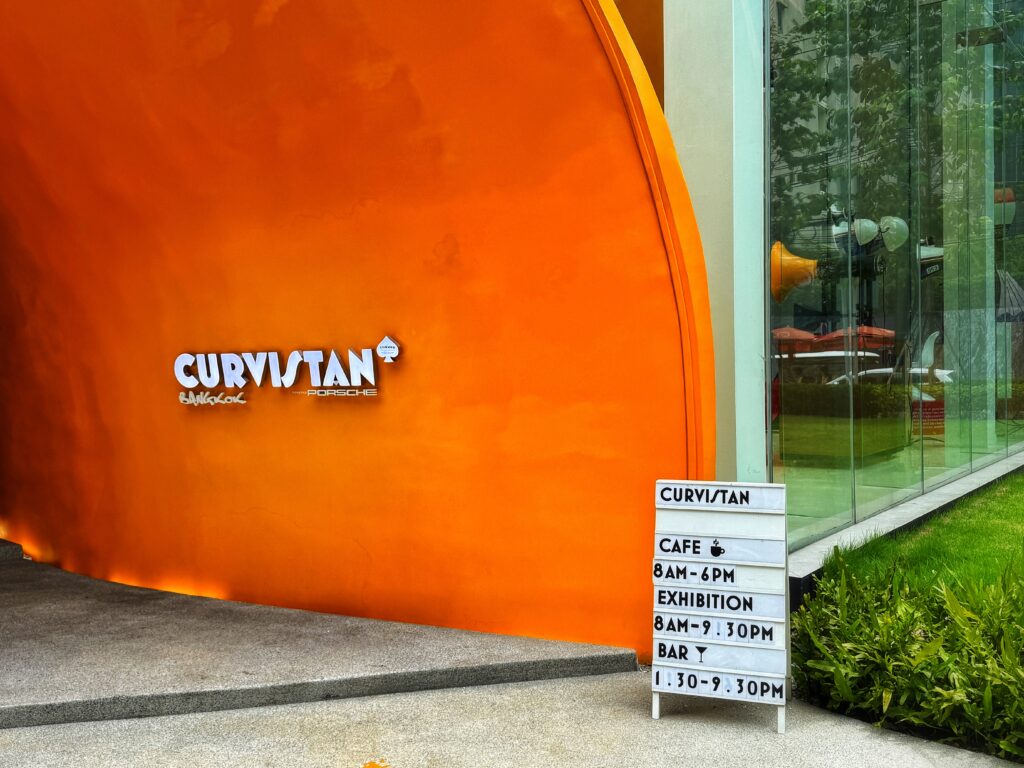 This first visit was extra special: Porsche Museum in Zuffenhausen, Germany had graciously lent the legendary Rothmans-liveried Porsche 956 driven by Jackie Ickx and Derek Bell to Curvistan for the Raceborn exhibition in Bangkok.
This first visit was extra special: Porsche Museum in Zuffenhausen, Germany had graciously lent the legendary Rothmans-liveried Porsche 956 driven by Jackie Ickx and Derek Bell to Curvistan for the Raceborn exhibition in Bangkok.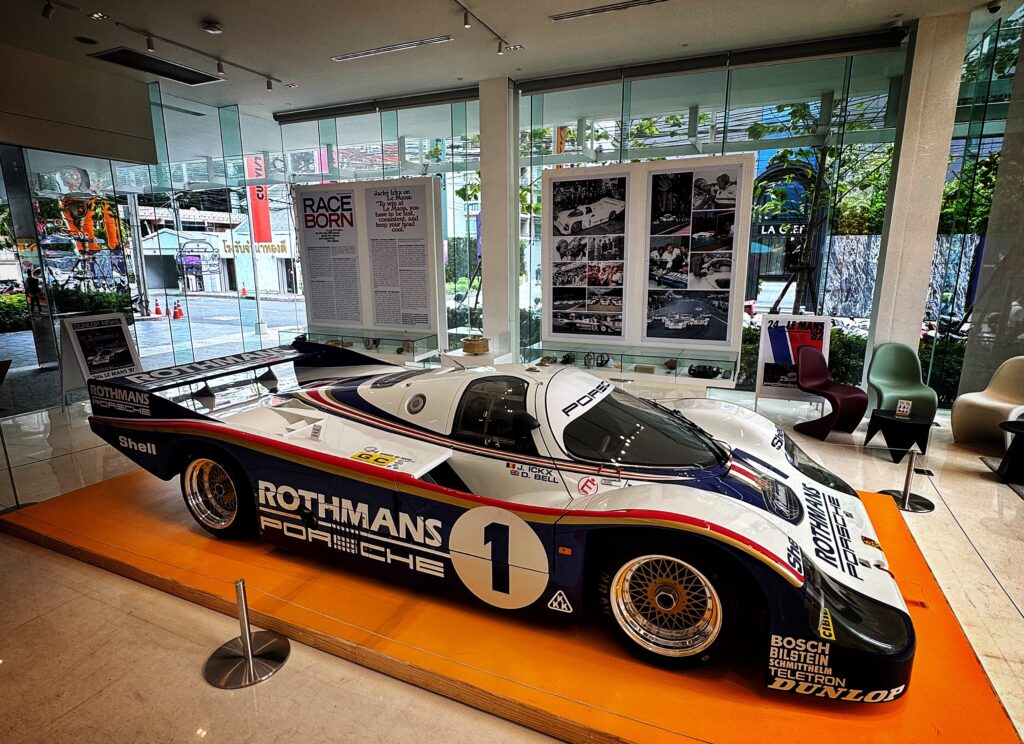 This example is the actual 1982 winner of the 24 Hours of Le Mans, driven by the Belgian-Brit pairing, so it is priceless. For Porsche Museum to lend the car (where it will be until the end of October), it is indeed a big deal. The Raceborn exhibit caps off Curvistan’s one-year anniversary.
This example is the actual 1982 winner of the 24 Hours of Le Mans, driven by the Belgian-Brit pairing, so it is priceless. For Porsche Museum to lend the car (where it will be until the end of October), it is indeed a big deal. The Raceborn exhibit caps off Curvistan’s one-year anniversary.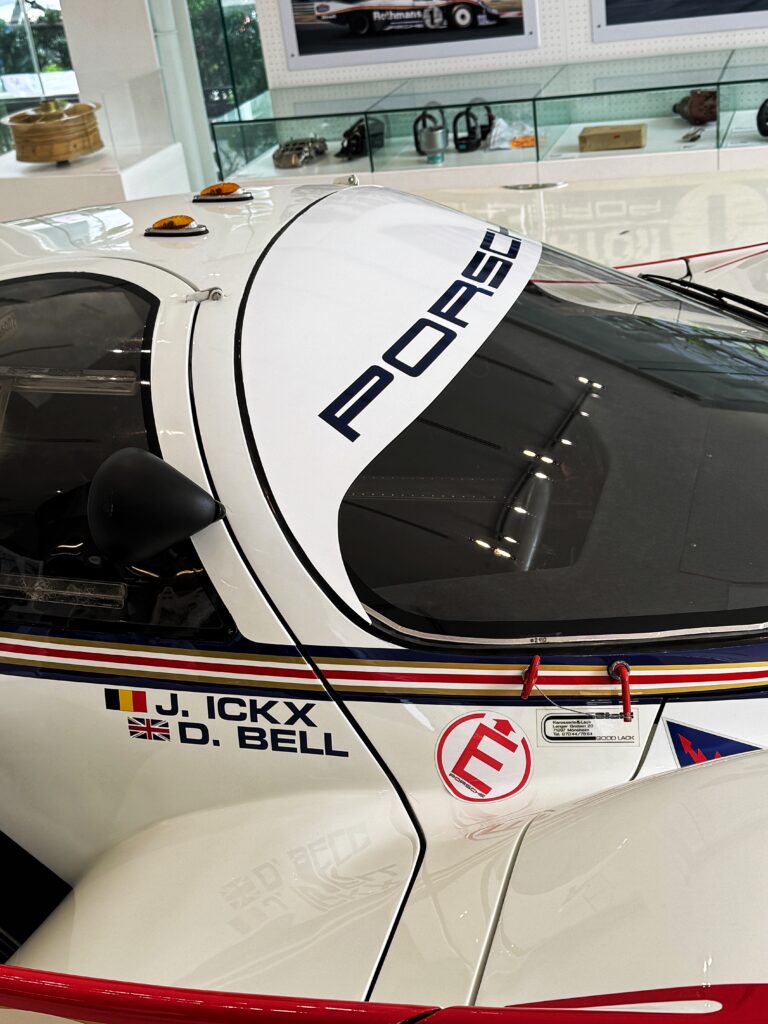 Meeting living legends is very rare, so I just had to see it.
Meeting living legends is very rare, so I just had to see it.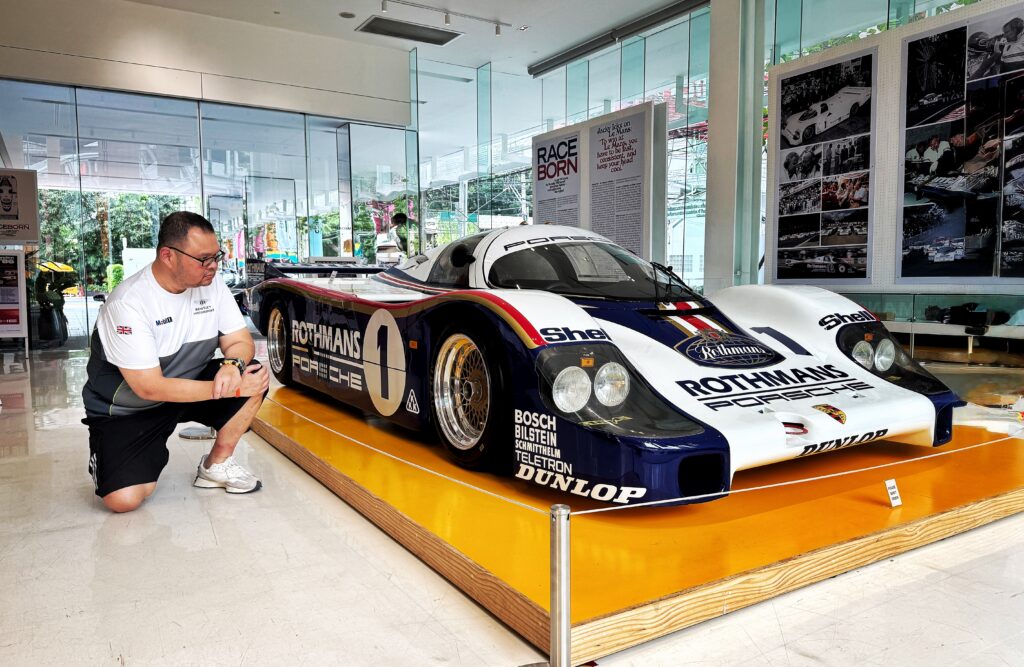 The 956 on display not only won the 24 Hour French Endurance Classic, but a similar vehicle also set a blistering lap record at the infamous Green Hell, otherwise known as Nurburgring in May of 1983. A Porsche 956K (a modified variant of the original Le Mans wining car) driven by Stefan Bellof during qualifying for the 1000km of the Nurburgring race. The time? An eye-watering 6:11.13 with an average speed of 202kmh over the 20.8 kilometer full endurance track. It’s been dubbed the impossible lap by fellow racers, motorsport journalists and enthusiasts of that era.
The 956 on display not only won the 24 Hour French Endurance Classic, but a similar vehicle also set a blistering lap record at the infamous Green Hell, otherwise known as Nurburgring in May of 1983. A Porsche 956K (a modified variant of the original Le Mans wining car) driven by Stefan Bellof during qualifying for the 1000km of the Nurburgring race. The time? An eye-watering 6:11.13 with an average speed of 202kmh over the 20.8 kilometer full endurance track. It’s been dubbed the impossible lap by fellow racers, motorsport journalists and enthusiasts of that era.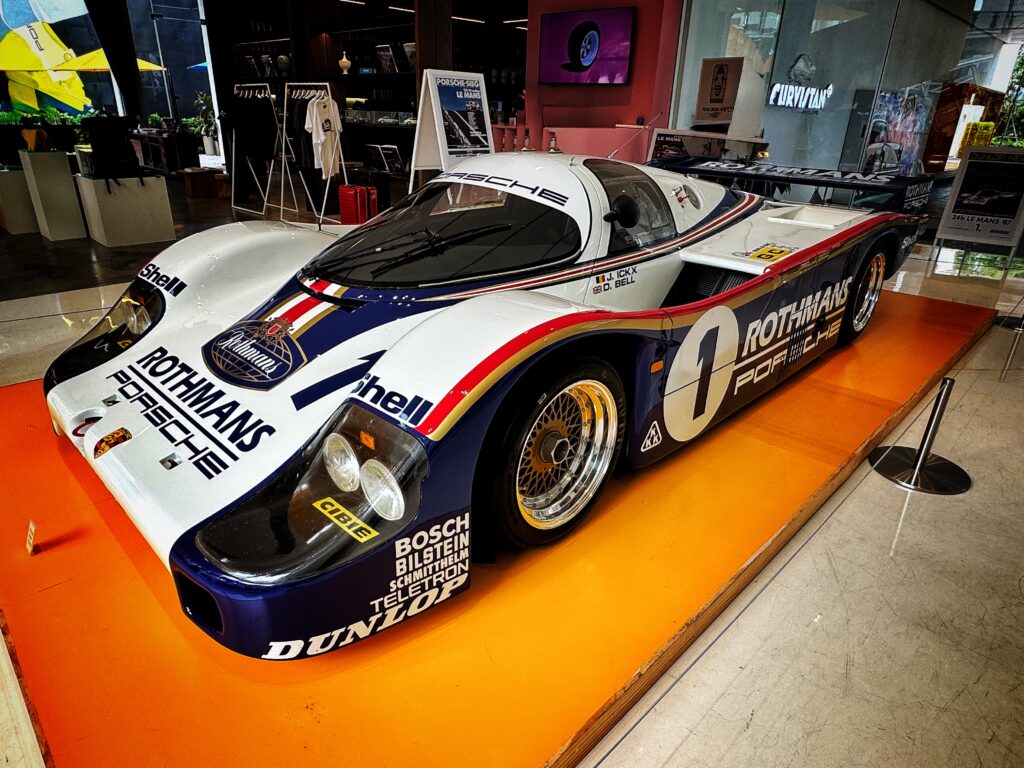 This was a record that stood for 35 years until another Porsche, the 919 Evo, beat it in 2018 with better tires, better aero, and better hybrid power.
This was a record that stood for 35 years until another Porsche, the 919 Evo, beat it in 2018 with better tires, better aero, and better hybrid power.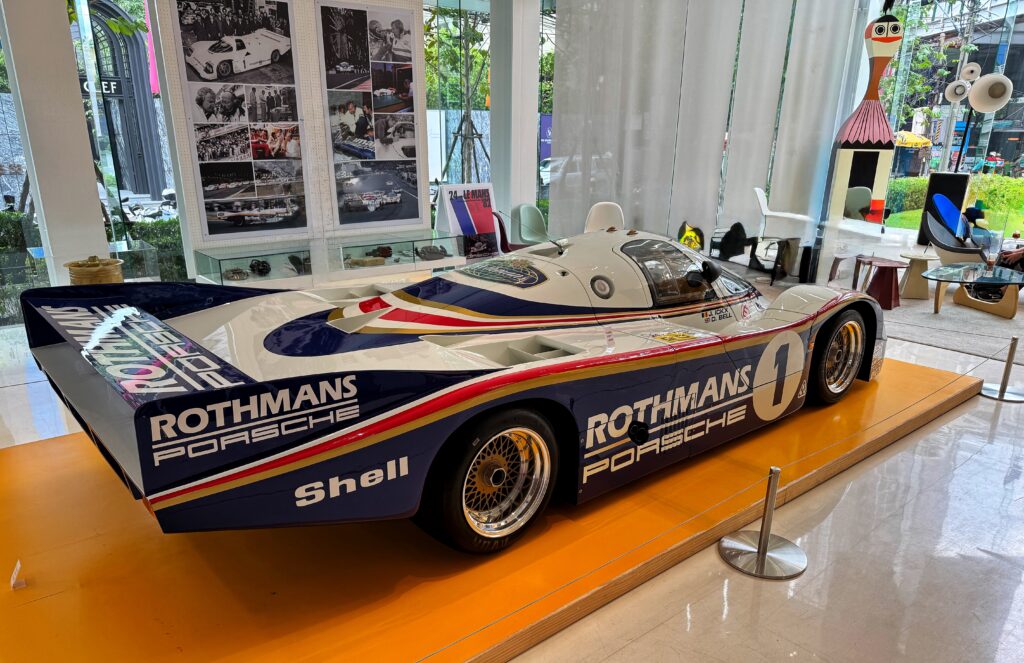 The 956 is tiny: it’s so low that I’m still physically taller when I crouch down beside it.
The 956 is tiny: it’s so low that I’m still physically taller when I crouch down beside it.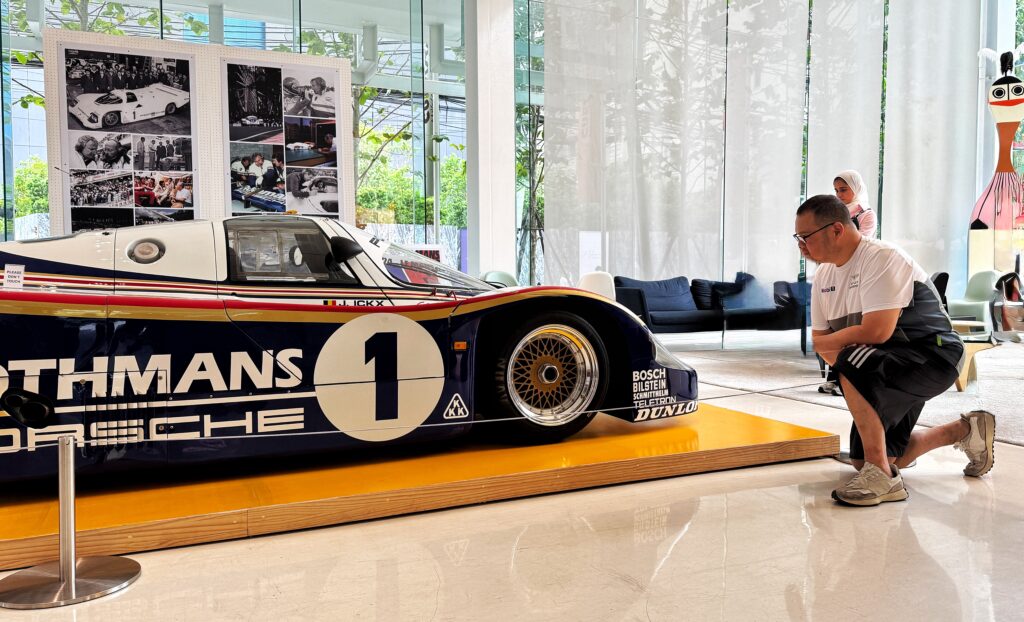 And yet it generates an unimaginable 1050kg of downforce in endurance mode at low-drag tracks at Le Mans, where it could reach speeds of up to 350-360km/h. On shorter “sprint” events and on tighter circuits, the 956 could generate even more downforce of up to 1280kg. Kuods to the underbody ground-effects and rear diffuser that sucks the 956 to the road like glue.
And yet it generates an unimaginable 1050kg of downforce in endurance mode at low-drag tracks at Le Mans, where it could reach speeds of up to 350-360km/h. On shorter “sprint” events and on tighter circuits, the 956 could generate even more downforce of up to 1280kg. Kuods to the underbody ground-effects and rear diffuser that sucks the 956 to the road like glue. 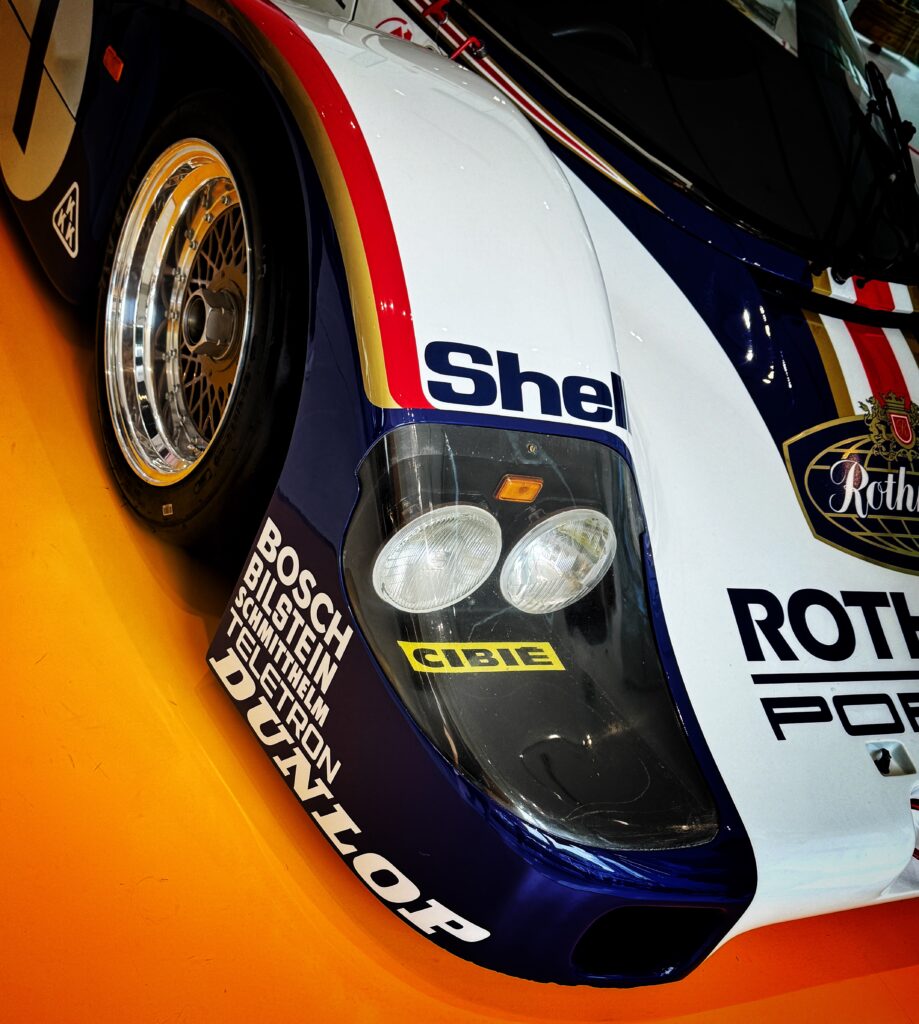 Impressive, considering the 956 weighed only 820-865kg (depending on trim and settings). It could theoretically drive upside down so long as it sped at 322km/h / 200mph or higher. Thank the underbody aerodynamics and that huge rear wing. It’s surprisingly quite long at a mandated 4.8 meters, following FIA Group C regulations of that era.
Impressive, considering the 956 weighed only 820-865kg (depending on trim and settings). It could theoretically drive upside down so long as it sped at 322km/h / 200mph or higher. Thank the underbody aerodynamics and that huge rear wing. It’s surprisingly quite long at a mandated 4.8 meters, following FIA Group C regulations of that era.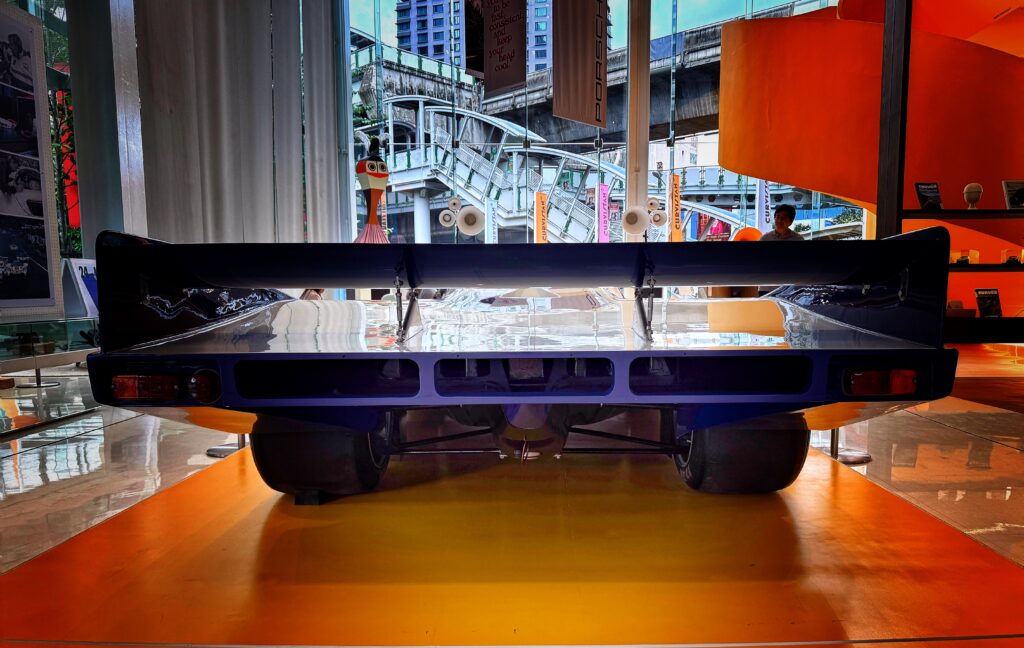 Power comes from a 2.65-liter Hans Mezger-designed flat-six engine utilizing water-cooled cylinder heads and air-cooled cylinders. It produces 620 turbocharged horsepower and 630 Newton-meters of torque, driving the rear wheels via a 5-speed transaxle gearbox.
Power comes from a 2.65-liter Hans Mezger-designed flat-six engine utilizing water-cooled cylinder heads and air-cooled cylinders. It produces 620 turbocharged horsepower and 630 Newton-meters of torque, driving the rear wheels via a 5-speed transaxle gearbox.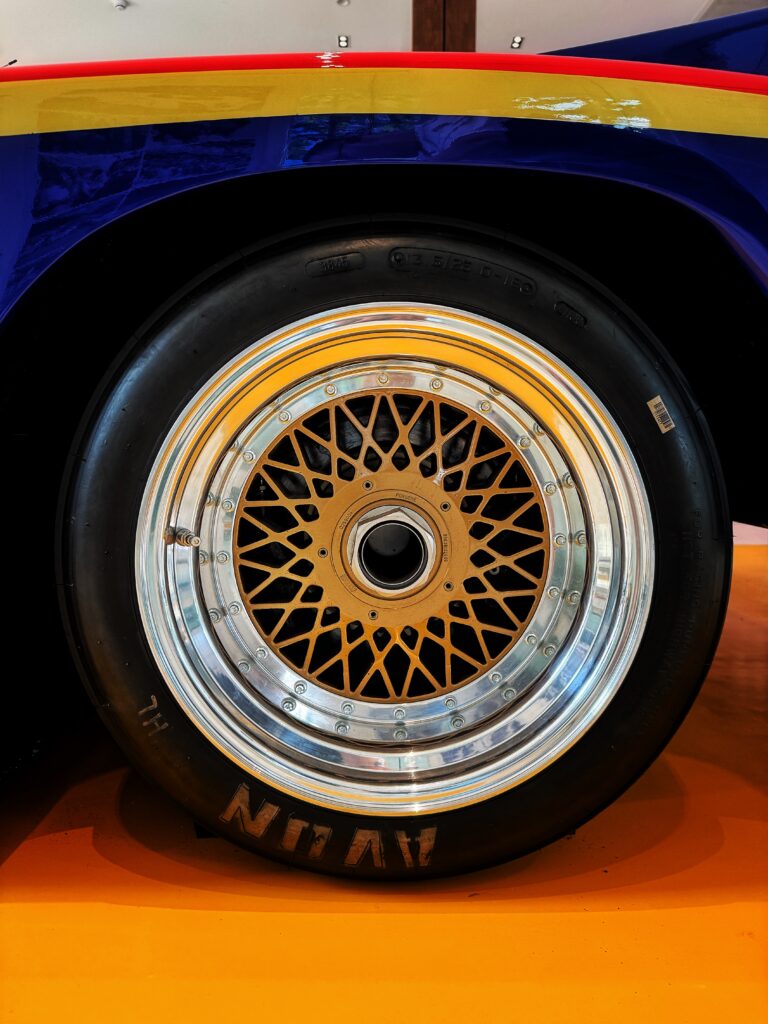 The fuel tank is an enormous 99 liters, enough to keep the 956 lapping the famed La Sarthe Circuit for between 11 to 13 laps, depending on trim and strategy. That’s anywhere from 150 to 177 kilometers, as a lap around Le Mans is 13.626 kilometers in length.
The fuel tank is an enormous 99 liters, enough to keep the 956 lapping the famed La Sarthe Circuit for between 11 to 13 laps, depending on trim and strategy. That’s anywhere from 150 to 177 kilometers, as a lap around Le Mans is 13.626 kilometers in length.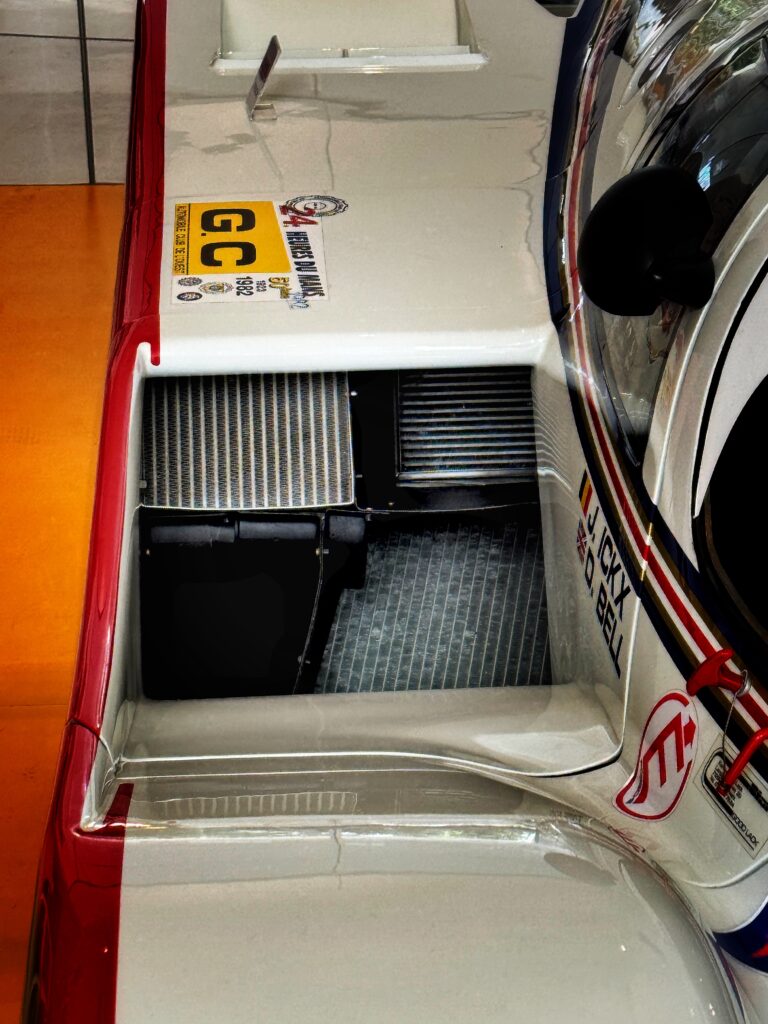 The Porsche 956 reigned supreme in an era where Porsche was so dominant, spanning from 1981 to 1987. The 956 was eventually replaced by the 962, essentially a modified 956 with a longer wheelbase that placed the driver’s feet behind the front axle line, improving safety. It would remain in competition worldwide until 1995 by privateer teams.
The Porsche 956 reigned supreme in an era where Porsche was so dominant, spanning from 1981 to 1987. The 956 was eventually replaced by the 962, essentially a modified 956 with a longer wheelbase that placed the driver’s feet behind the front axle line, improving safety. It would remain in competition worldwide until 1995 by privateer teams.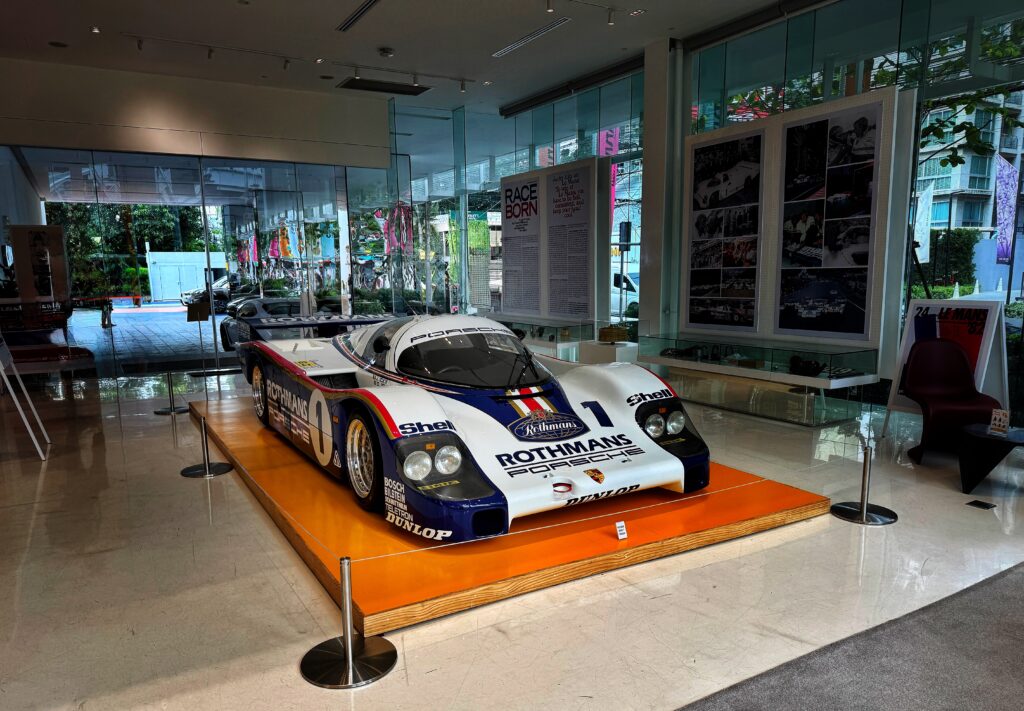 The 956 is a racing machine that would never happen in today’s environment. Safety was an afterthought, environmental concerns non-existent, and tobacco (as well as alcohol) sponsorship very common in that era. It was truly an unforgettable, almost hedonistic age in motorsport where danger was the forbidden yet highly sought after romance.
The 956 is a racing machine that would never happen in today’s environment. Safety was an afterthought, environmental concerns non-existent, and tobacco (as well as alcohol) sponsorship very common in that era. It was truly an unforgettable, almost hedonistic age in motorsport where danger was the forbidden yet highly sought after romance.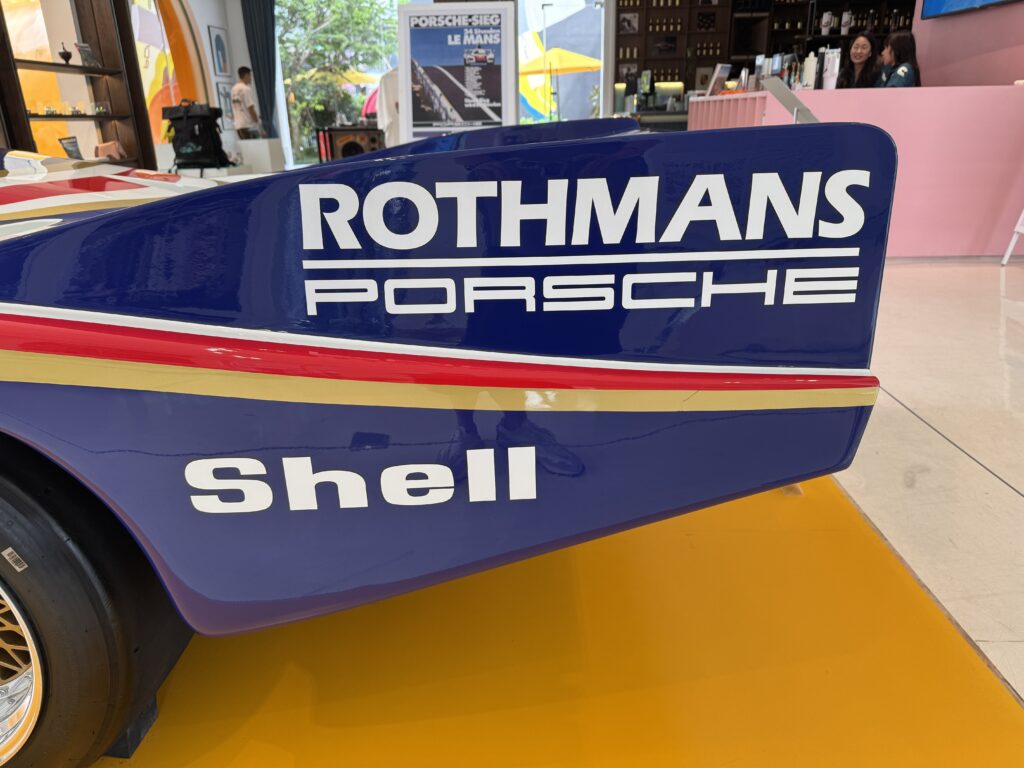 This, along with the other infamous Rothmans-liveried Porsche, the 1986 Paris-Dakar rally-winning 959, made children of this era dream big, imagine places they have never seen, but only read about, in an era before the internet and social media.
This, along with the other infamous Rothmans-liveried Porsche, the 1986 Paris-Dakar rally-winning 959, made children of this era dream big, imagine places they have never seen, but only read about, in an era before the internet and social media.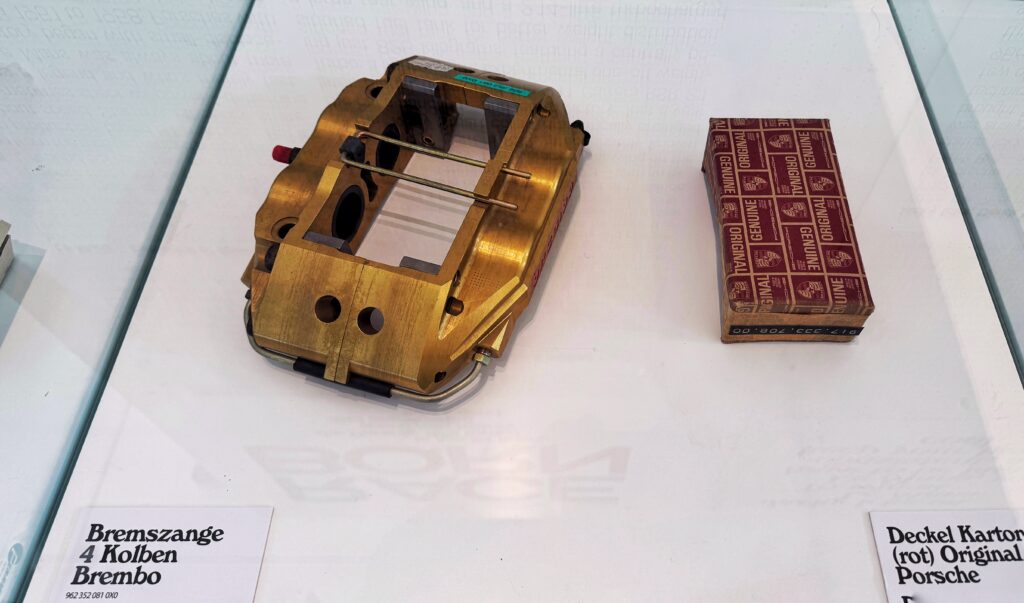 Aside from the 956 itself, the Porsche Museum also sent other racing components for Curvistan’s Raceborn Exhibition: Brembo brake calipers of the 956 and the much newer 919,
Aside from the 956 itself, the Porsche Museum also sent other racing components for Curvistan’s Raceborn Exhibition: Brembo brake calipers of the 956 and the much newer 919,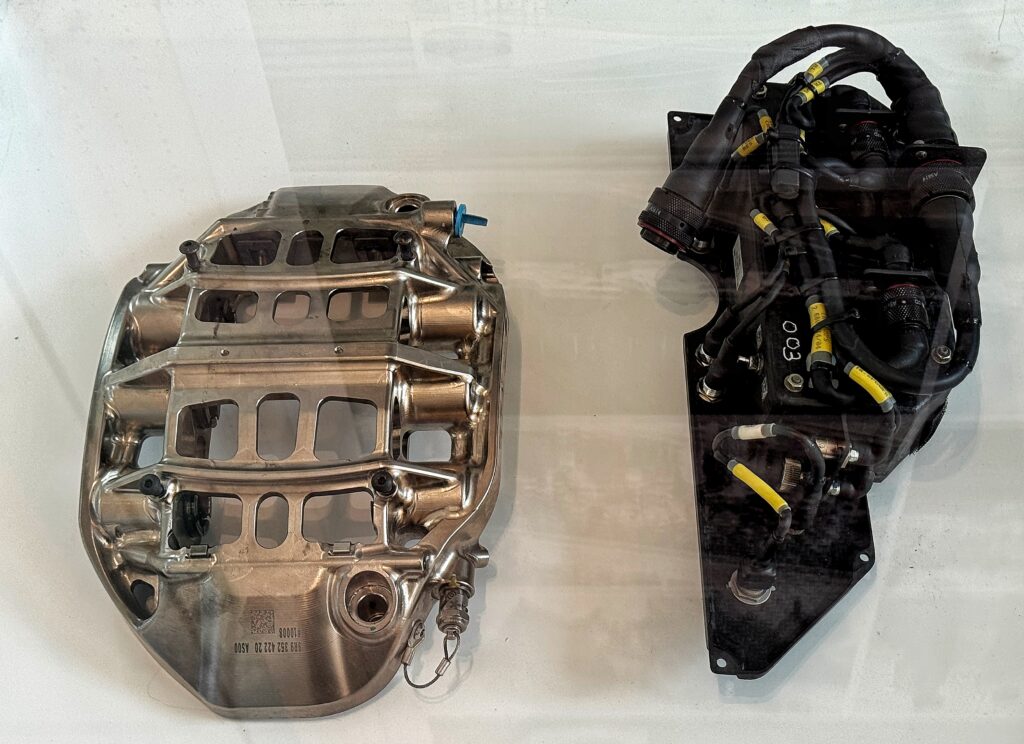 center-lock tie-down fasteners used on Porsche race cars being transported,
center-lock tie-down fasteners used on Porsche race cars being transported,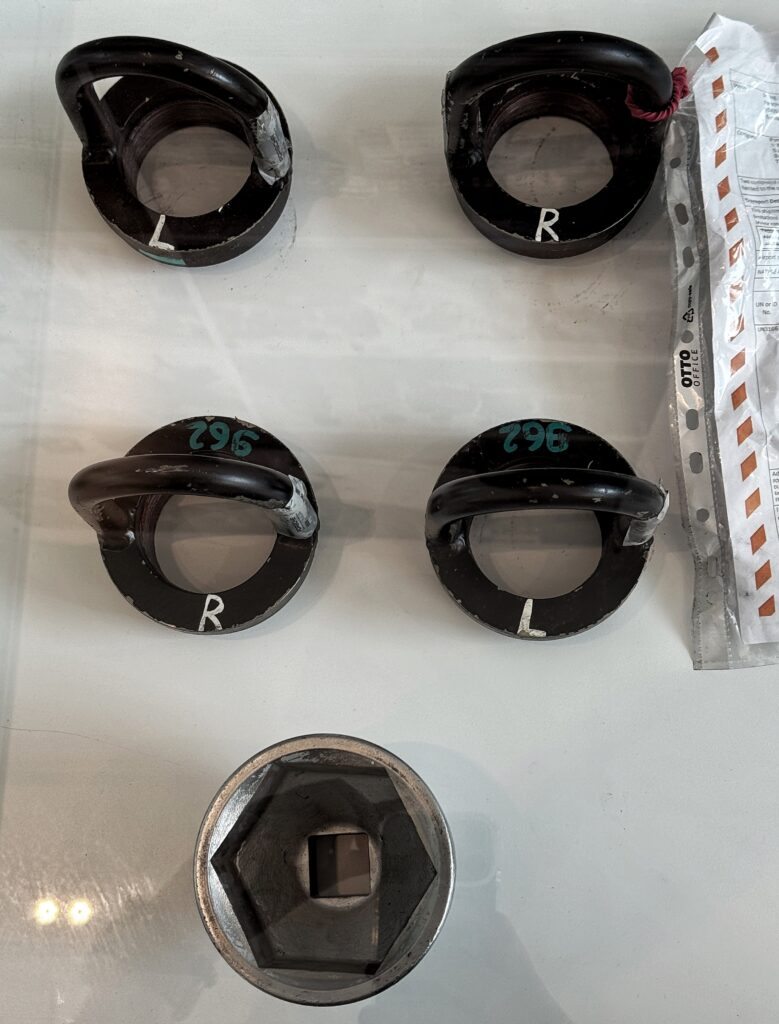 a composite fan and shroud assembly used for cooling the 917’s flat-12 cylinder (Porsche’s first Le Mans winning race car from a decade prior)
a composite fan and shroud assembly used for cooling the 917’s flat-12 cylinder (Porsche’s first Le Mans winning race car from a decade prior)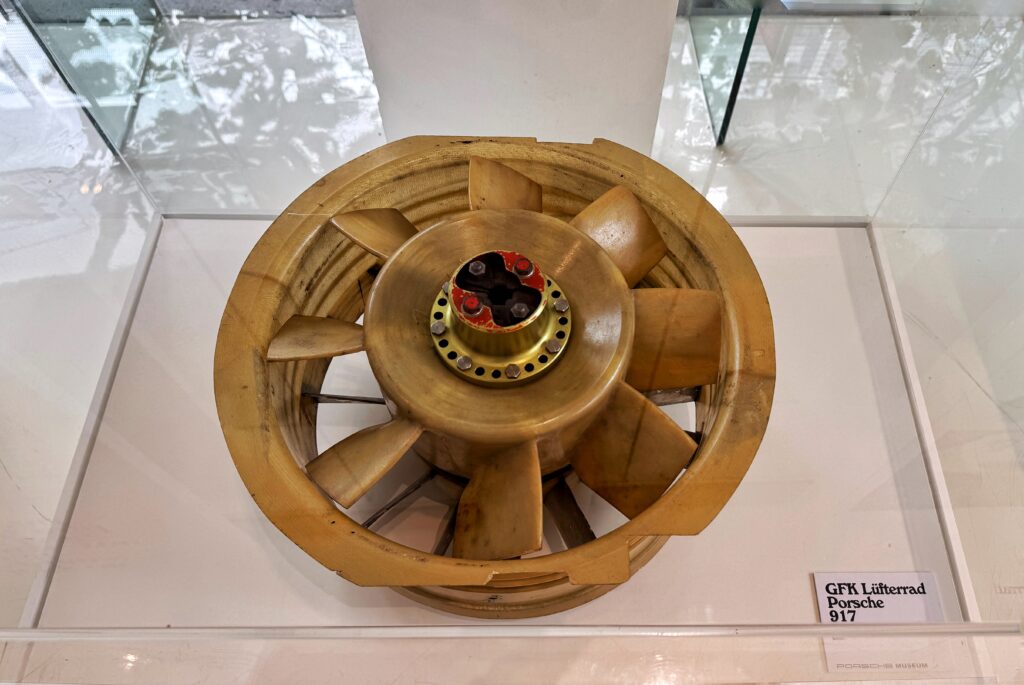 and a turbocharger from Kúhnle, Kopp & Kausch, long-time OEM & motorsport turbocharger supplier for Porsche and many other European marques, and more.
and a turbocharger from Kúhnle, Kopp & Kausch, long-time OEM & motorsport turbocharger supplier for Porsche and many other European marques, and more.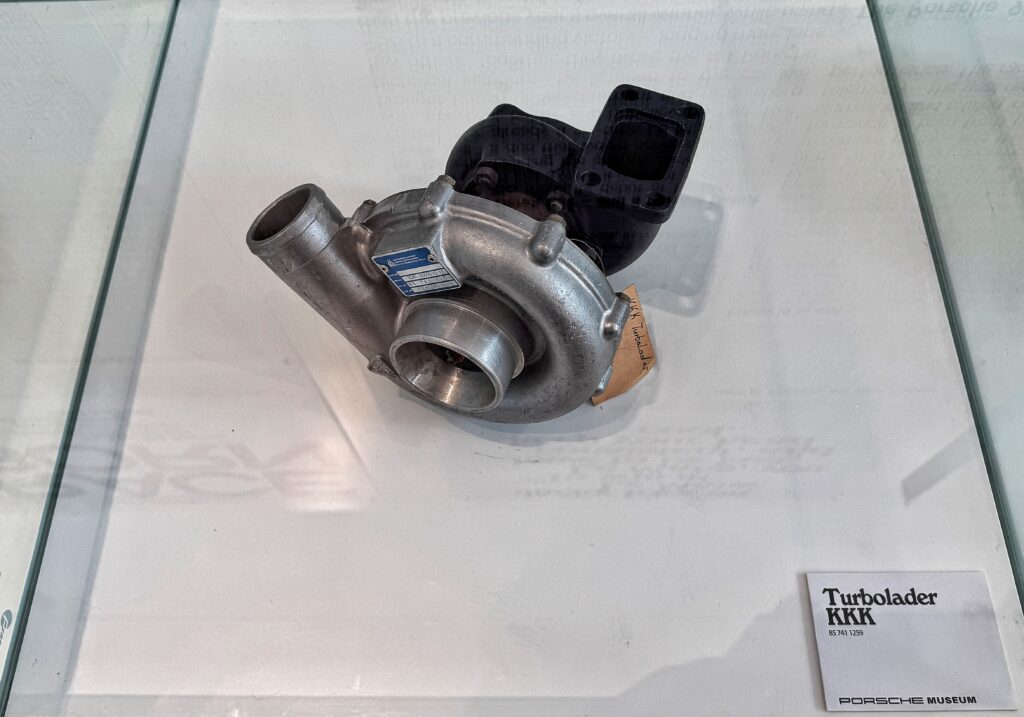 The 956 will be on display at Curvistan Bangkok until the end of October, so if you even remotely love cars, motorsport and history (plus great food and drinks!), do drop by Curvistan Bangkok. And make sure to pick up some cool merchandise too!
The 956 will be on display at Curvistan Bangkok until the end of October, so if you even remotely love cars, motorsport and history (plus great food and drinks!), do drop by Curvistan Bangkok. And make sure to pick up some cool merchandise too!